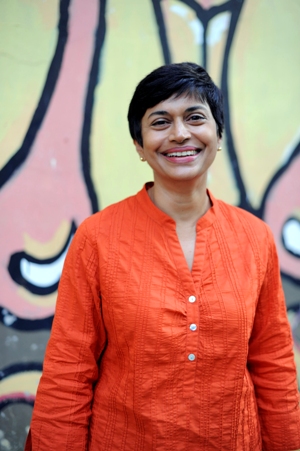
Storytelling with OH Cards
I was first introduced to OH Cards by Kiran Shah and Sheila Wee, who used them in storytelling workshops. Kiran promoted the use of OH cards here in Singapore, where I met Moritz Egetmeyer, the OH Cards publisher, when he facilitated the workshops. However, it was only when I began to use the cards myself in my own workshops that I realised what extraordinarily useful tools they are.
I work as a professional storyteller, author, and educator based in Singapore, and run the Asian Storytelling Network with my partner. I work with story in all its forms – within the oral tradition, with text, as performance, and for personal and corporate development.
I often collaborate happily with other artists to interpret their stories. I also work with all ages as a facilitator in educational settings, including settings not limited to the formal educational system or to any specific institution.
Whether the “deliverables” are narrow, such as providing specific structures for language learning, or more holistic, such as understanding complex perspectives, I find that OH Cards can effectively trigger deeper thinking or understanding of the content for more experiential learning.
When working with OH Cards, I try to honour the recommended ethics of the genre and use them in ways that are non-diagnostic, non-competitive, and non-threatening. I try to provide a safe space to explore issues using random choices, so people do not feel like they are trapped in any situation.
OH Experiences
Watching people come to their own personal revelations is wonderful. For example, many years ago in a workshop with a large group of young adults who were using the storytelling decks SAGA, MYTHOS, and 1001, a young man whose group members had finished their stories happened to lean back and notice another person in another group still going through the exercise. He turned to me and said in surprise, “It’s amazing – he’s holding the same card I had, but his story is so different!” He hardly needed my help to draw out the message. “Perhaps it doesn’t matter what cards you hold in your hand – it’s how you play that matters.”
In such times, participants are often happy to do the exercise again, shuffling the decks or choosing new cards to discover stories they like. When students find a story they like, one that makes sense to them, there is spontaneous applause. They are happy to transfer the story to other forms, such as text or performance. This builds their skills and confidence and is driven by their own initiative.
In another instance, after a tight time-bound exercise of “Problems and Solutions,” a young boy stood up and asked me, “How did you manage it that every problem had a solution? What magic did you do?” I had to remind him that it was he who had found his own solutions, not I.
OH Decks
In our basic storytelling workshops, the storytelling decks mentioned above are very popular, but I also like HABITAT, PERSONA, PERSONITA and ECCO. I find it easy to create new ways of using them.
For example, at a Valentine’s Day storytelling gathering of adults, it was easy to use PERSONA to trigger stories of love. Both the tellers and the audience had a wonderful time sharing stories of love in all its manifestations!
I recently used the OH Original deck in a workshop called “Memorable Stories” that I facilitated at the Singapore International Storytelling Festival 2013, and it went very well.
I love all the decks and the art within them and hope to find opportunities to use them more frequently.
